Patient preparation in supine position for arthroscopy
1. Introduction
For arthroscopically assisted reduction and fixation of intraarticular fractures the patient is in a supine position with the knee flexed or with the lower leg hanging over the table edge.
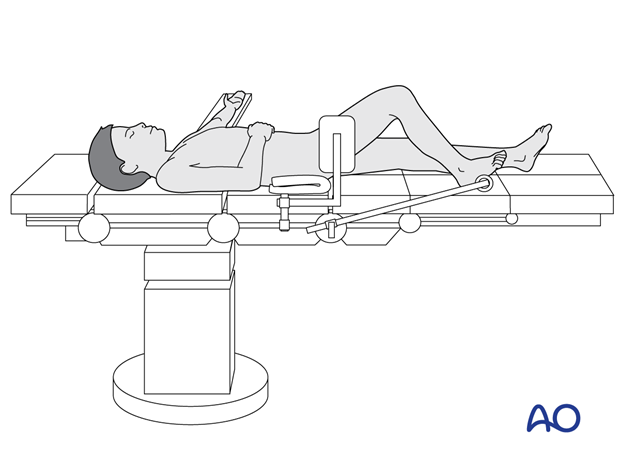
2. Preoperative preparation
Read the additional material on preoperative preparation.
3. Anesthesia
Fracture manipulation and surgical stabilization is usually performed under general anesthesia.
Regional and local anesthetic blocks may be used to reduce postoperative pain.
Regional blocks should be avoided in patients at risk of developing compartment syndrome.
4. Prophylactic antibiotics
Antibiotics are administered according to local antibiotic policy and specific patient requirements.
5. Patient position
There are several options for patient positioning.
Option 1
Place the patient supine on a radiolucent table.
Use a holding device at the foot to keep the knee flexed and on the femur for lateral stabilization.
This position is preferred for intraoperative imaging of intraarticular epiphyseal fractures, which are stabilized with screw fixation.

Option 2
Place the patient supine on a radiolucent table with the leg supports removed.
Stabilize the injured leg with a holding device placed around the upper leg.
The lower leg hangs over the table edge with the knee flexed.
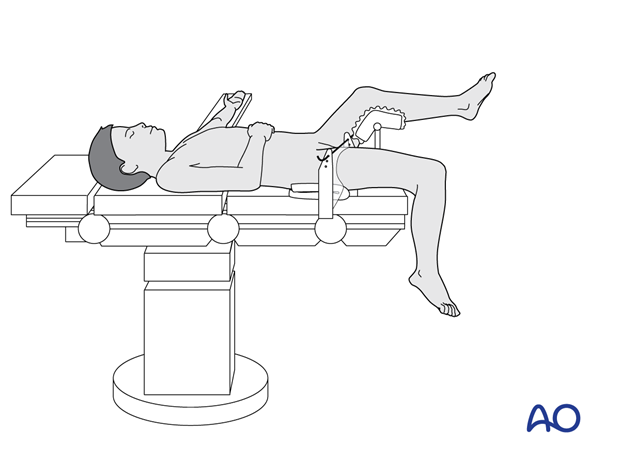
6. C-arm positioning
Position the C-arm with the beam directed from the injured side so that AP and lateral views can be obtained.
With the knee hanging over the edge of the table, the contralateral leg is lowered for a lateral view and extended manually for an AP view.
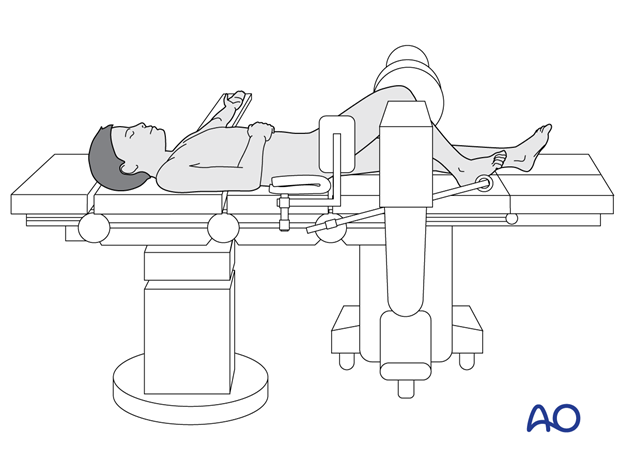
7. Tourniquet use
A tourniquet improves visualization during arthroscopic procedures.
The effect of ischemia/reperfusion in the presence of a compromised soft-tissue envelope must be considered.
The tourniquet width should be more than half the limb diameter and applied over a thin layer of padding.
The ischemic time should not exceed 120 minutes.
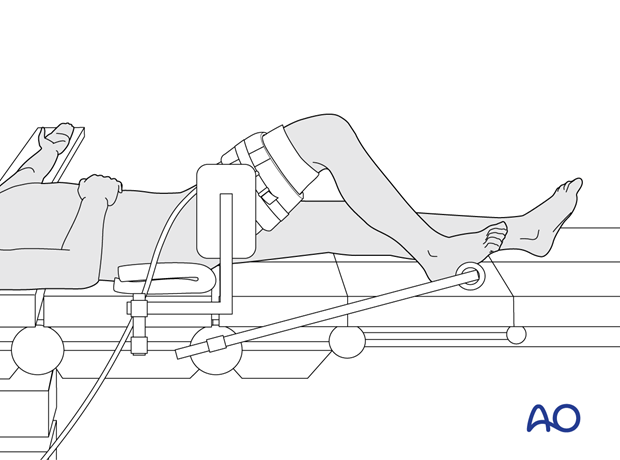
8. Skin preparation and draping
Prepare the lower leg, including the distal femur and foot.
Drape the limb to the mid-thigh or the level of the tourniquet.
Drape the C-arm in a conventional manner.
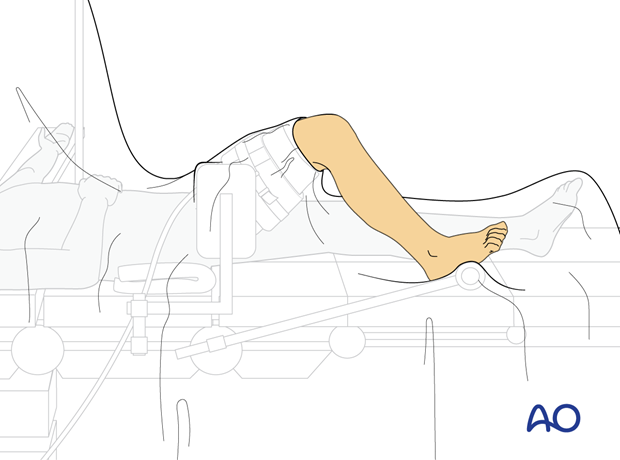
9. OR set-up
The optimal position of the surgeon is on the injured side of the patient.
The position of the image intensifier screen should allow a direct view for the surgeon.














